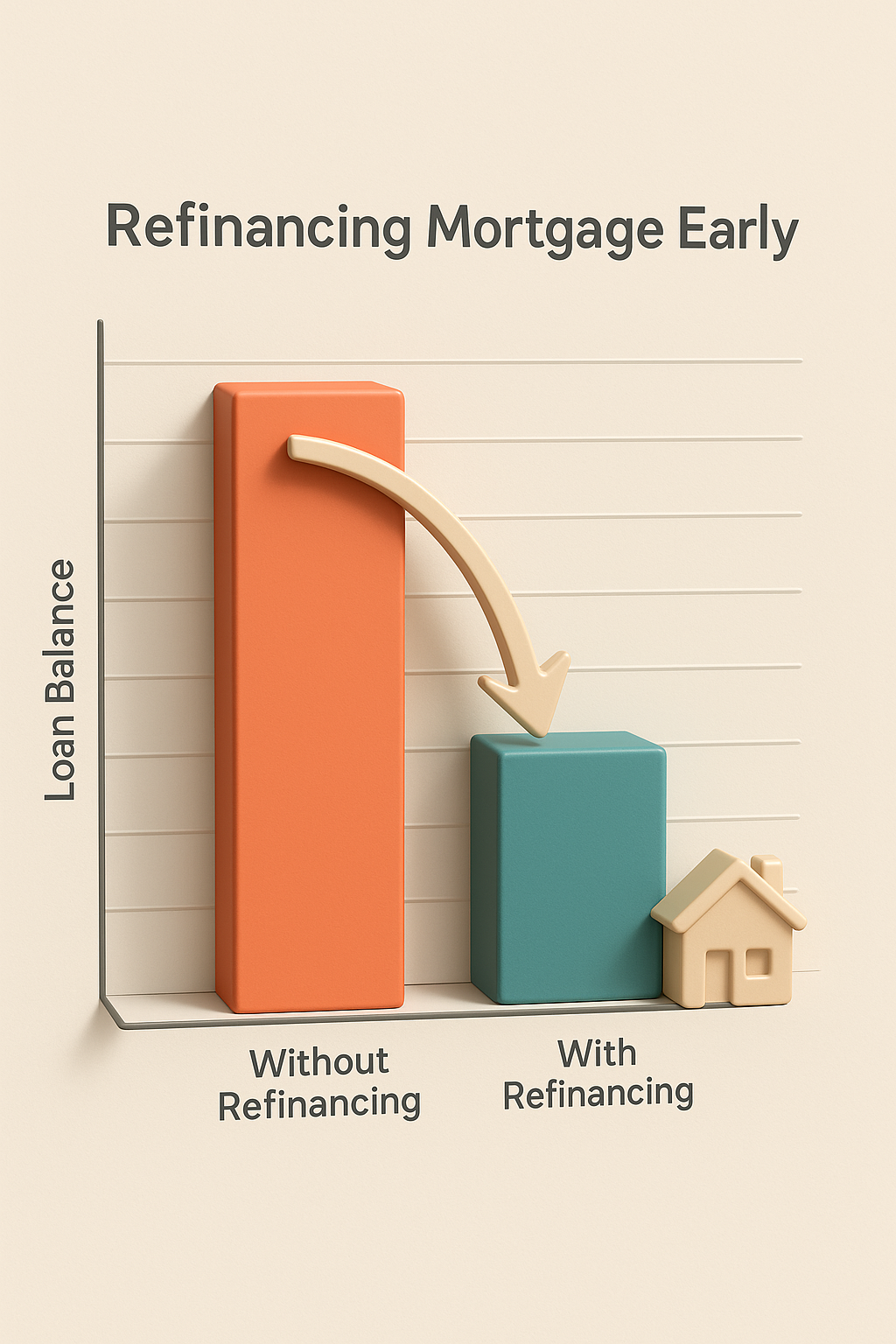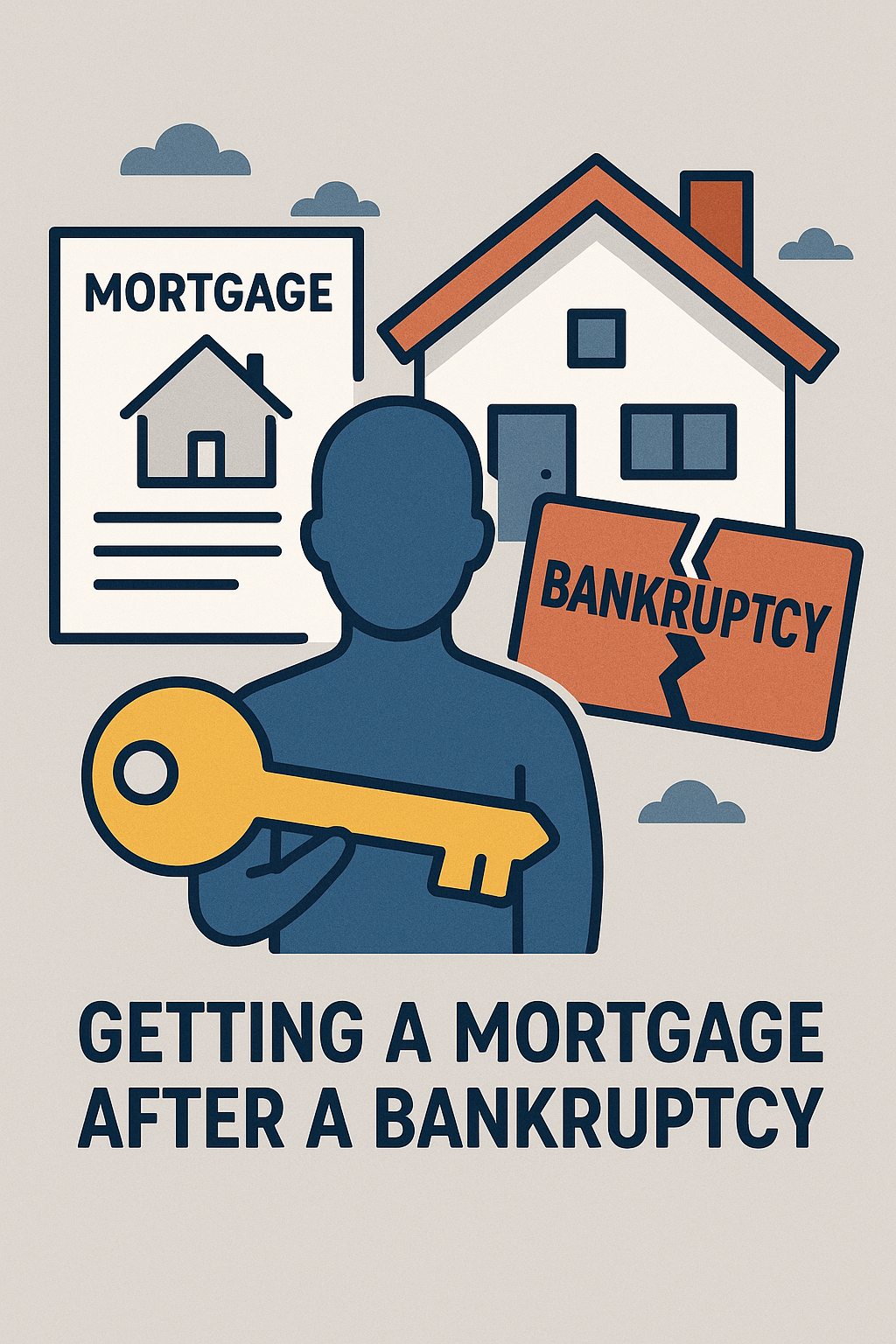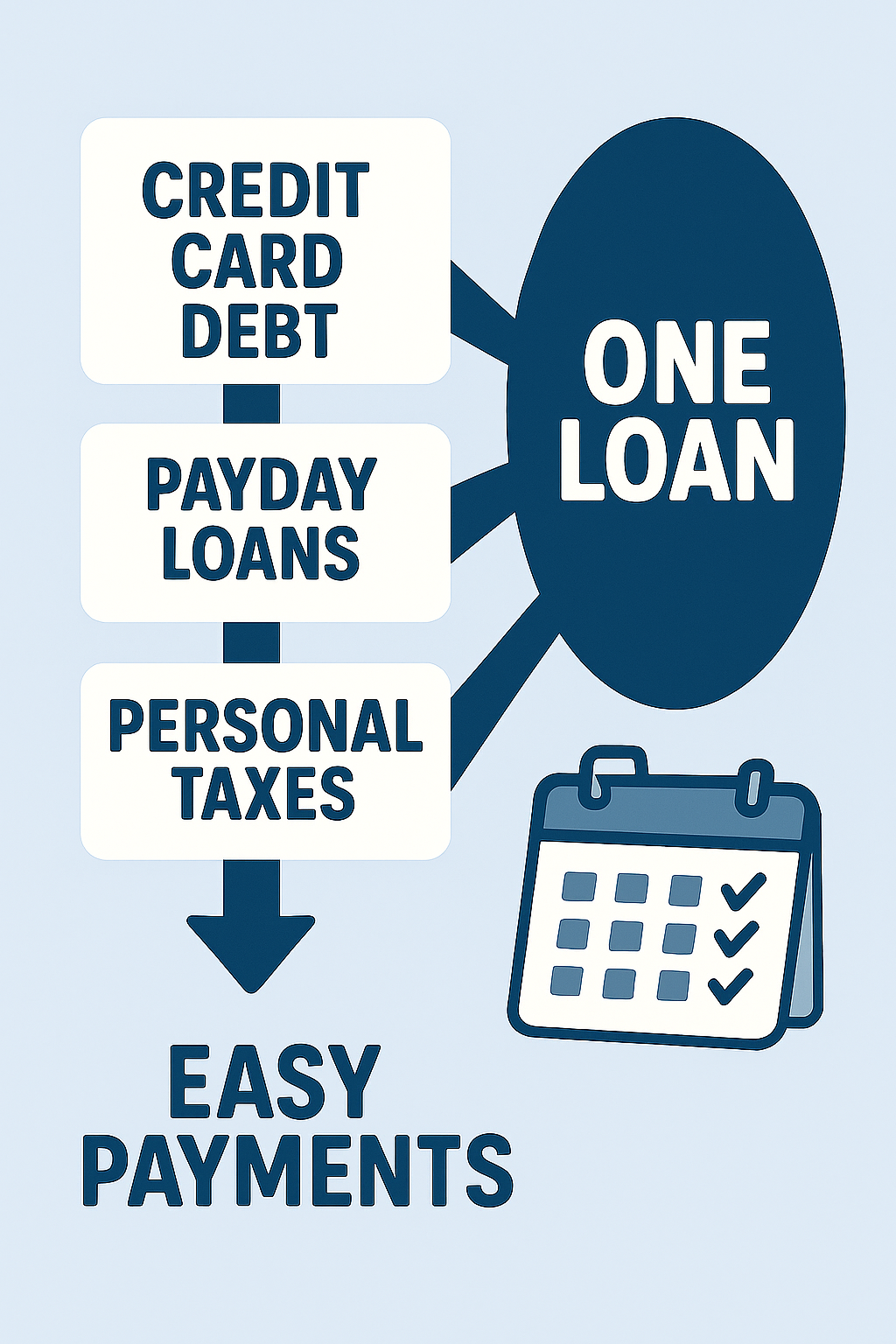Table of Contents
Toggle7 Ways Debt Could Impact Your Mortgage Renewal (and How to Fix It)
Debt doesn’t have to derail your plans—but does having debt affect your mortgage renewal in Canada? The short answer is yes. From credit-card balances to car loans, your total debt load can influence the rate you’re offered, which lenders will work with you, and how smoothly your renewal goes. The good news: with a 90-day game plan and a few smart moves, you can protect your approval, improve cash flow, and even use renewal time to simplify your debts. Let’s break down what lenders look at, how debt changes your options—and the proven fixes that put you back in control.
1) What Lenders Look At on Renewal (Fast Primer)
Even though many Canadian lenders will auto-renew existing clients with minimal friction, your overall debt picture still matters—especially if you want the best available rate or plan to switch lenders. Here are the big pillars under review:
-
Credit health: Score, utilization, payment history, and any new collections or late payments.
-
Debt levels & payments: Credit cards, lines of credit, car loans/leases, personal loans, student loans, buy-now-pay-later, and other mortgages/HELOCs.
-
Income stability: Employment type (salaried, hourly, self-employed), consistency, and reasonability compared to taxes/NOAs.
-
Affordability ratios: GDS (Gross Debt Service) and TDS (Total Debt Service) must fit the lender’s policy.
-
Property & equity: Current market value and equity cushion relative to your outstanding balance.
-
Stress test: Even at renewal—particularly when switching—you may need to pass the stress test at the qualifying rate, which can tighten things.
Bottom line: Yes—having debt can affect your mortgage renewal by changing your rate options, product availability, and even whether you can switch to a better lender.
2) 7 Powerful Ways Debt Can Affect Your Renewal
1) Higher Rate Offers
High balances (especially on revolving credit like credit cards) and high utilization can push your score down and signal risk. Lenders may counter with higher rates to offset that risk. Even a small premium in rate adds up over a full term.
Example: A 0.30% rate premium on a $500,000 mortgage can cost thousands over a 5-year term.
2) Tougher Stress Test Results
When switching lenders (and in many cases even when just renewing), you may need to re-qualify under the stress test at a higher qualifying rate. Extra consumer debt bumps up your TDS and can cause your file to miss the cut—meaning you’re stuck with your current lender’s offer or forced to accept a shorter term or a different product.
3) TDS/GDS Ratio Red Flags
Your TDS includes all monthly debt payments (credit cards, loans, lines of credit) plus housing costs. If new debts—like a car lease—or higher minimums push your TDS beyond the lender’s limit (commonly ≤44% for many A-lenders, case-by-case), your approval options shrink or rates increase.
4) Harder to Switch Lenders
Existing lenders often provide a “path of least resistance” renewal. But to switch and get the best market rate, your new lender will want clean income, ratios, and credit. High unsecured debt can make a switch more difficult, limiting your negotiating power.
5) Lower Maximum Mortgage Amount
If your TDS is tight, a lender may cap the maximum mortgage you qualify for—even on renewal. That can block plans such as refinancing for renovations or consolidating higher-interest balances unless there’s sufficient equity and the new payment still fits policy.
6) Shorter Term & Fewer Product Choices
Riskier files sometimes get shorter terms (e.g., 1–3 years) or restricted products (e.g., fewer prepayment features). While a shorter term can be strategic if you expect debt to fall, it may also mean you’ll renegotiate sooner—and pay more if rates move against you.
7) Appraisal & Equity Pressure
If you’re consolidating debt at renewal (refinance or HELOC increase), your lender may order an appraisal. If home values have softened, the loan-to-value (LTV) limit could constrain how much you can consolidate—forcing you to leave some higher-interest debt outside the mortgage or consider a B-lender/private option.
3) Proven Fixes If You’re Renewing With Debt
Good news: there are practical ways to get control before your renewal window.
A) Cut Utilization Below 30% (Ideally <10%)
Credit card utilization heavily influences scores. Pay revolving balances down—then leave accounts open to preserve available credit.
B) Kill High-Interest Debts First
Target 19–29% APR credit cards and payday-style products. Every dollar removed here boosts cash flow and improves TDS.
C) Replace Variable Minimums With Fixed Payments
Consolidate multiple cards/LOCs into a fixed-payment personal loan (if available) or consider a mortgage refinance if you have equity. Predictable payments improve ratios and reduce behavioural risk in the underwriter’s eyes.
D) Avoid New Installment Debts Before Mortgage Renewal
That shiny car lease can torpedo your TDS. Delay major financing until after your mortgage is secured.
E) Correct Credit Report Errors
Dispute wrong late payments or duplicates. A quick score bump can materially improve rate offers.
F) Show Stable, Documentable Income
Keep pay stubs, T4s, and NOAs handy. Self-employed? Prepare 2 years of returns and a clean set of business financials.
G) Consider a 30-Year Amortization (Where Eligible)
If cash flow is tight, a longer amortization can lower the payment and bring TDS back in line. You can always prepay when your debts are under control.
H) Blend & Extend (If It Makes Math Sense)
Some lenders let you blend your current rate with a new one and extend the term. If it reduces cash-flow strain without big penalties, it can be a smart bridge.
4) Smart Strategies to Lower Interest Costs Long-Term
-
Debt-Consolidation Refinance: Roll higher-interest debts into your mortgage if equity allows. The rate is typically far lower, and one payment simplifies budgeting.
-
HELOC With a Plan: A HELOC is flexible, but don’t trade one open-ended line for another. Set an aggressive repayment plan (e.g., fixed transfers every paycheque).
-
Bi-weekly Accelerated Payments: On the mortgage, this can save years of interest without committing to large lump sums.
-
Snowball or Avalanche Methods:
-
Avalanche: Pay the highest APR first (pure math winner).
-
Snowball: Pay the smallest balance first to build momentum (behavioural winner).
-
-
Prepayment Privileges: Use annual lump sums and payment increases once your budget stabilizes great for crushing principal faster.
5) Renewal Timeline: A 90-Day Game Plan
Day 90–70:
-
Pull your credit report and review for errors.
-
List every debt, balance, limit, payment, and APR.
-
Start paying down revolving balances to drop utilization below 30%.
Day 70–45:
-
Request the current lender’s mortgage renewal offer.
-
Gather income docs (pay stubs, T4s/T1s, NOAs).
-
Price-shop with a mortgage broker for switch options; compare full APR, not just the headline rate.
Day 45–21:
-
If switching is blocked by TDS, consider a 30-year amortization or structured debt consolidation via refinance (subject to LTV).
-
If equity is thin, investigate a B-lender short-term bridge with a plan to improve ratios and return to an A-lender in 6–18 months.
Day 21–0:
-
Lock the best-fit solution: renewal, switch, or refinance.
-
Set up bi-weekly payments and calendar reminders for prepayment windows.
6) Signs You Should Consider an A, B, or Private Lender
A-Lender (Banks, Prime Credit Unions)
-
Strong credit, low utilization, on-time payments.
-
TDS fits standard policy (often ≤44%).
-
Documentable, stable income (T4/T1/NOA).
-
Goal: Best long-term pricing and features.
B-Lender (Alt-A/Monoline/Trust)
-
Credit bruises, higher utilization, or recently self-employed.
-
TDS a bit outside A-policy.
-
Willing to pay a modest rate premium for flexibility and a path back to A.
-
Typical term: 1–3 years while you clean up ratios and scores.
Private Lender (Equity-Based/Short Term)
-
Time-sensitive situations, recent collections, consumer proposal, or urgent payout needs.
-
Focused on equity and exit strategy more than income.
-
Use as a temporary bridge; plan an exit in 6–18 months.
7) Common Myths About Debt & Renewals
Myth 1: “My lender must provide a mortgage renewal to me no matter what.”
Reality: Lenders can and do price for risk—or decline. Options are better when you plan early.
Myth 2: “If I have debt, switching is impossible.”
Reality: Not always. With the right mix of amortization, debt consolidation, and documentation, many homeowners still qualify to switch.
Myth 3: “Consolidating into the mortgage is always cheaper.”
Reality: Usually, but run the math. Consider penalties, fees, and how long you’ll carry the balance.
Myth 4: “Closing old cards boosts my score.”
Reality: Closing reduces available credit and can raise utilization. Often, it’s better to keep accounts open and at low balances.
FAQs
Q1: Does having debt affect my mortgage renewal in Canada?
Yes. Higher unsecured debts can push up your TDS, reduce your credit score, and limit access to best-rate products—especially if you want to switch lenders. Pay down revolving balances and clean up any reporting errors before your renewal window.
Q2: Can I renew if I’m in a consumer proposal?
It’s harder with A-lenders, but a B-lender or private option may bridge you through to completion. The key is a documented exit plan back to mainstream pricing.
Q3: Will my current lender check my income and re-qualify me?
Many lenders streamline same-lender renewals, but for the best pricing or if anything material changed—they may review income, ratios, and property details. Switching lenders typically requires full re-qualification.
Q4: Is it better to refinance or take a HELOC to pay off debt?
Refinancing can lock in a much lower rate with a structured amortization. A HELOC is flexible but requires discipline. The right move depends on equity, cash flow, and behaviour. Sometimes a hybrid of both works best.
Q5: How quickly should I start preparing before renewal?
Aim for 90 days. That’s enough time to reduce utilization, correct errors, collect documents, and compare offers.
Q6: Can extending my amortization help me qualify?
Yes—where eligible, moving to a 30-year amortization can reduce payments and improve TDS, often unlocking better options.
Final Take: Debt Doesn’t Have to Derail Your Mortgage Renewal
Having debt absolutely influences your mortgage renewal—but with 90 days of prep, smart utilization management, and the right lender fit, you can still secure a competitive outcome. If your goal is lower monthly payments and faster debt freedom, consider a consolidation strategy inside the mortgage—with a clear plan to pre-pay once your budget stabilizes.
- 7 Smart Truths About Refinancing a Mortgage at Any Time (And Avoiding Costly Penalties) - December 12, 2025
- Suggested Steps to Get Approved for Mortgages After Bankruptcy in Canada - December 10, 2025
- Land Equity Loans in Ontario: Important Truth & Tips - December 8, 2025






